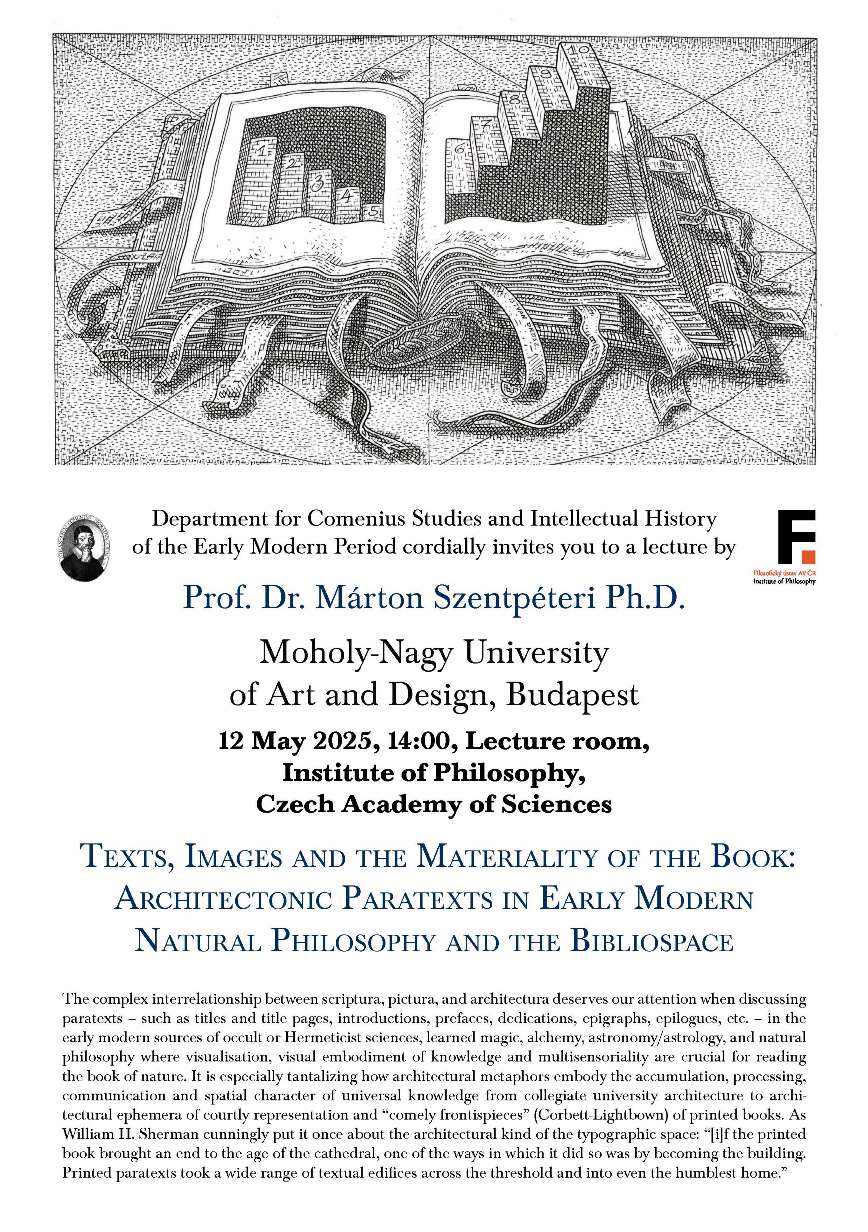
12 May 2025, 14.00, Lecture room, Institute of Philosophy, Czech Academy of Sciences
Prof. Dr. Márton Szentpéteri Ph.D. (Moholy-Nagy University of Art and Design, Budapest)
lecture
Invitation to download here.
Annotation
The complex interrelationship between scriptura, pictura, and architectura deserves our attention when discussing paratexts – such as titles and title pages, introductions, prefaces, dedications, epigraphs, epilogues, etc. – in the early modern sources of occult or Hermeticist sciences, learned magic, alchemy, astronomy/astrology, and natural philosophy where visualisation, visual embodiment of knowledge and multisensoriality are crucial for reading the book of nature. It is especially tantalizing how architectural metaphors embody the accumulation, processing, communication and spatial character of universal knowledge from collegiate university architecture to architectural ephemera of courtly representation and “comely frontispieces” (Corbett-Lightbown) of printed books. As William H. Sherman cunningly put it once about the architectural kind of the typographic space: “[i]f the printed book brought an end to the age of the cathedral, one of the ways in which it did so was by becoming the building. Printed paratexts took a wide range of textual edifices across the threshold and into even the humblest home.”

